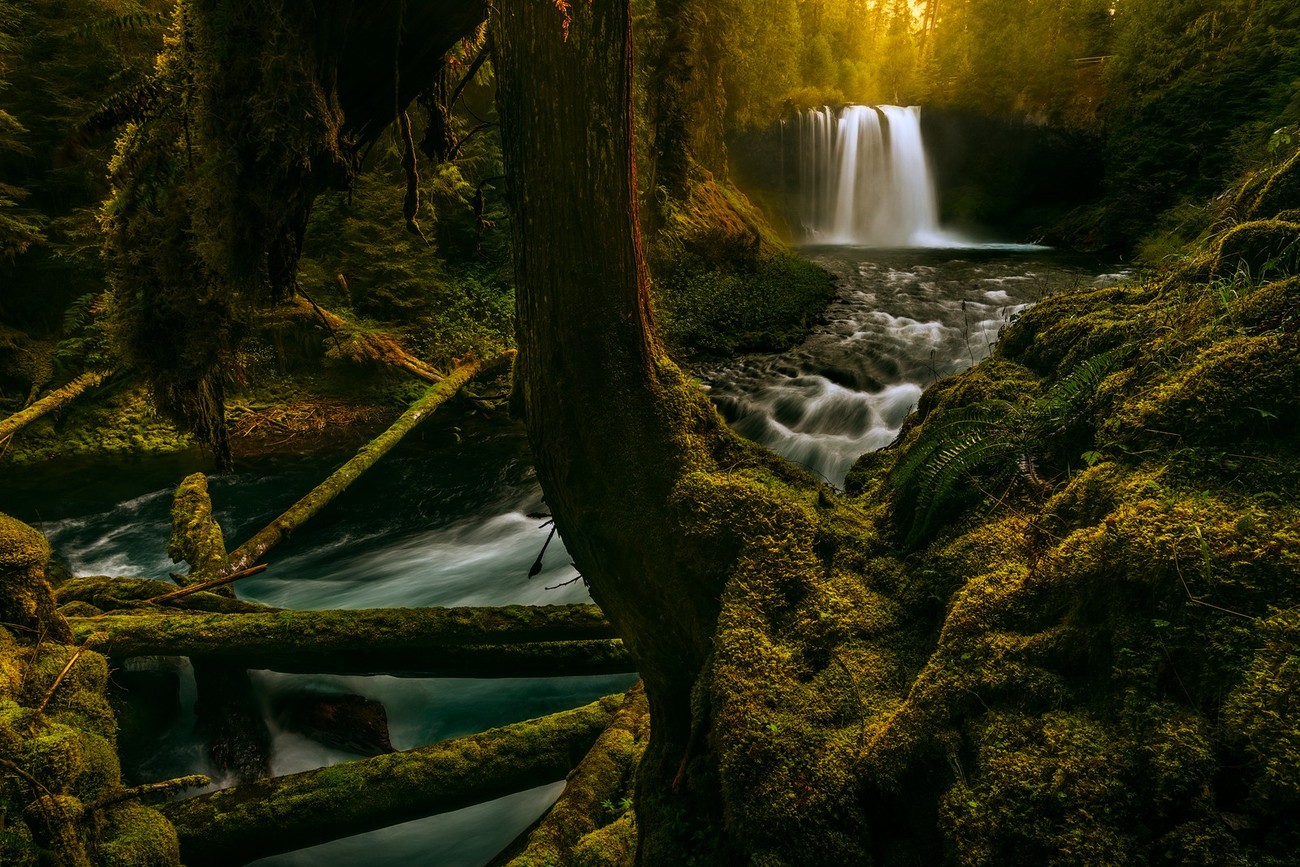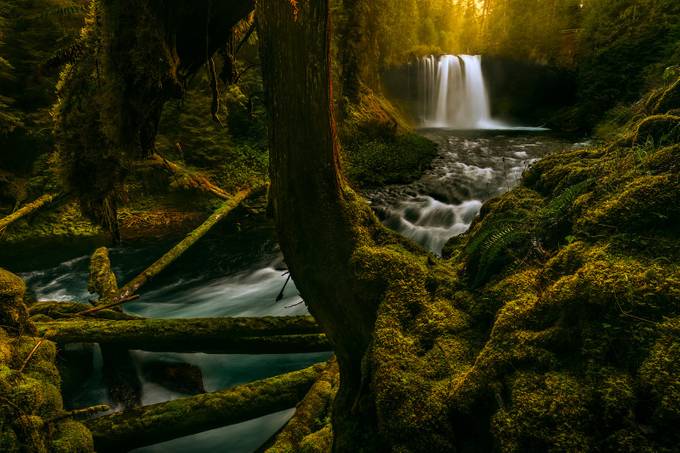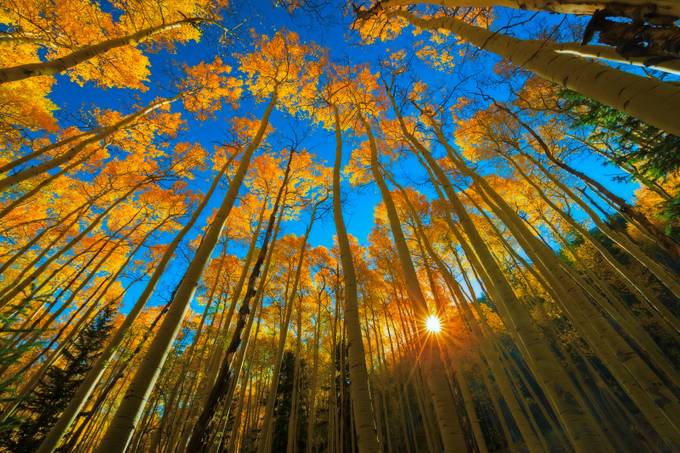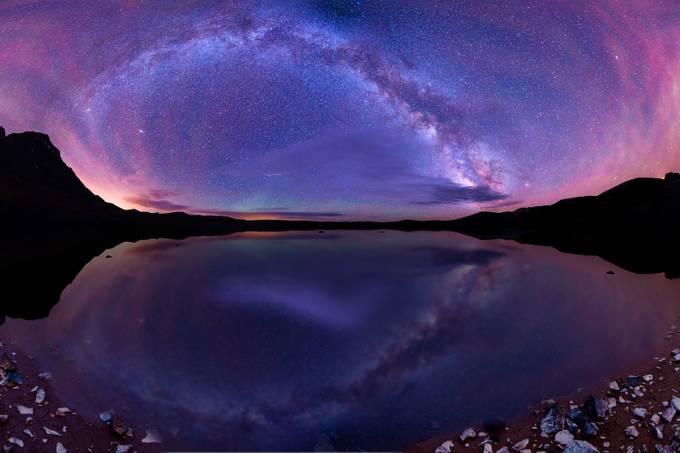Meet Matt Payne (mattpayne) an artist who uses photography as a way to communicate different points of views and ways of looking at the world, many not so obvious to the general passer-by. Payne specializes in landscape photography, especially photos of nightscapes, sunsets, mountain vistas and other natural wonders. His way of accenting and bringing out the details in a photo is his way of communicate the wonders of the world and leave the viewer with a colourful story. We contacted Payne to asked him some questions about one of his biggest passions: photography.
1. What inspired you to be a photographer?
My love for photography started out as a means to capture and record my journey to climb the highest 100 mountains in Colorado. I suppose you could say that the beauty and wonder of the Colorado Wilderness was my inspiration. After I started to reach a plateau with my gear and skills, I decided to upgrade to a DSLR and proceeded to check-out every single photography-related book at the local library so that I could learn how to shoot in manual.
2. What was your first camera and what do you shoot with today?
My very first camera was a Sony DSC-828 – it was a 8 megapixel (at the time, this was huge) digital camera with a fixed 8-200mm Zeiss lens attached. I upgraded in 2011 to a Nikon D7000 and then in 2012 I upgraded to a Nikon D800. I’ve dabbled with the Sony A7 line-up, and enjoyed that experience; however, I missed my Nikon 14-24 lens and the more intuitive and user-friendly handling of the Nikon, so I stayed with my Nikon set-up.
3. When someone looks at your photos, what do you want them to take away from it, what are you trying to communicate?
This is such a great question that I think all photographers should think about before they press the shutter button. For me, I am generally trying to communicate my connection with the natural world and the hidden wonders found there. I’m also really drawn to astrophotography because it allows me to communicate some beliefs I have around the cosmos and just how infinitesimal we really are as a species – which I think is an incredibly powerful thing to ponder.
4. What is it that you love about photography?
Photography is an incredible story-telling device and allows an artist to connect viewers with points of view and ways of looking at the world that might not be so obvious to the general passer-by. I’ve found beauty in some of the oddest places and I’m always excited like a kid on Christmas when I see that beauty in a way that only photography allows you to.
5. What has photography done for you?
Photography has driven me to stay committed to my personal goals for enjoying the outdoors and finding wonder and beauty in places I never even thought to before. It has also opened a door for me to express my creative vision on a palate that I have the ultimate control over – that feels good. Additionally, I love that in photography you’re never really done learning. I can think of several photographers that are better than me at different aspects of the craft and I’d love to spend time learning from them.
6. Do you try to be conceptual or do you prefer to show the feeling behind a photo?
This is another really great question! I think that I try to walk a fine line between the two, to be honest. I think one of the biggest challenges for any photographer is to weave the technical components of a photograph with the artistic components in a way that does not feel overly forced. I know that I’m still working on this myself.
7. How do you describe your style?
The way in which I would describe my style is “hyper-realism” – meaning, I like to take a scene and then accentuate and bring out the details that were most appealing and interesting to me at the time, whether that be a mountain, a sunset, the Milky Way, or a cluster of wild flowers.
8. If you had to choose one lens which one would it be and why?
This is such an easy question for me to answer – the Nikon 14-24 f/2.8, without a doubt. It is by far one of the sharpest and most versatile lenses made. It also allows me to take photos in the style I’ve come to be known for.
9. What are your 3 tips for others who want to become better photographers?
My advice for anyone is to first learn how to use your camera in manual mode and understand how the exposure triangle works. This allows for so much more creative control over your subject and scene than shooting in auto that really the possibilities are endless. Next, I’d suggest becoming extremely curious about the work of other photographers that you admire, and to ask yourself how they shot it. This will force you to experiment and learn new techniques and post-processing skills. Lastly, I’d highly recommend learning as much as you possibly can about Lightroom and Photoshop (or your program of choice) – these open up a third dimension of creative control and ability that really cannot be emulated or accomplished in the field.
10. Have you received negative feedback from your work? What did you do about it?
Absolutely! When I was first learning this was a really hard pill to swallow and I remember getting angry about it; however, I’ve since embraced negative feedback as a means to improve my photography. I have even started a private Facebook group dedicated to just providing critique on landscape photos and invited many photographers that I admire to that group so that we could all learn from each other. This has really helped with my ability to take constructive criticism and use it to improve my skills.
11. Where did you learn to take photos?
I learned to take photos in a variety of locations, including my living room and backyard to start out with. After reading about a new technique or concept, I’d test it out on a simple subject close to home before venturing out to the wilderness to use it in the real world when timing matters. Also, when I first bought my DSLR, I started a 365 project, which forced me to try new things and shoot new subjects every single day, which helped a great deal.
12. Raw vs jpg and why?
I think the answer to this question depends on how much control you want over your images and what you plan to do with them. I think the easy answer that most people would say is to always shoot RAW, which I do; however, I think there are times, especially when you’re just learning to use the camera or if you’re just snapping shots you don’t plan to edit, that .jpg is just fine. Personally, I love the creative control and flexibility afforded by the Nikon RAW files and would never go back to shooting .jpg.
13. What do you carry in your camera bag?
Generally, I’m carrying my Nikon D800, Nikon 14-24 f/2.8, Nikon 24-70 f/2.8, and my Nikon 70-200 f/2.8. Additionally, I carry a shutter cable release (Nikon MC-36), which allows me to do time-lapses. Also, I always have one of my tripods with me, either my Gitzo or my Feisol; a headlamp, and a lens cloth.
14. If you could have the gift of a great photographer who would it be and why?
At this point, I’m most envious of photographers that have better post-processing skills and more time to shoot than me. The person that best fits this description is probably Marc Adamus. He shoots all over the world and is able to be places that I’ll probably only dream to shoot. Additionally, his processing skills are second to only a few.
15. What is the most common mistake you see people making when shooting these days?
I think the most common mistake people make is to try to copy what other people are doing, whether that be a location or a style. You should shoot for yourself and shoot what is interesting to you. I know this is a bit counter to what I said before about trying to learn how and what others are doing in order to improve; however, that really only gets you so far in this world. You need to differentiate yourself as an artist.
16. What is your dream location to shoot?
Right now I think I’d love to shoot in Patagonia – the scenes I’ve seen from that part of the world just captivate my imagination and get me really excited about photography.
17. How do you decide on where to shoot a photo?
I would say that 50% of my photography is unplanned and 50% is planned, meaning, a lot of the times when I’m capturing a photo, it is because I’m in a location that is interesting to me. So, in order for that to happen, I have to have a connection with a location and have an interest to be there, whether that be a wilderness area or a mountain top. The other 50% of the time, I’m doing research on either Google Earth or using an application which can help determine the angle of light, the position of the sun/moon/stars, etc.
18. What is next for you? Any planned adventures with your camera?
I don’t have any solid plans right now for any grand adventures. I do hope to get back into the Columbia River Gorge for some waterfall photography soon, and, I’d love to do more hiking and climbing in Colorado and Washington and capture some scenes of those majestic areas.
19. What is your goal with your photography?
Right now I have taken a step back and have been shooting for myself and not to meet some artificial goal. I’m lucky that photography is not my sole source of income (although it does mean I have to go to the office every day), so I am able to be picky about what I photograph and when I do it. I’d love to round out my portfolio a bit more with some more diverse locations, including the desert southwest. Lastly, I hope my photos do connect with viewers and that people that appreciate those connections do purchase some of my work, as it does help keep the creative juices flowing (and helps pay for airline tickets)!
If you want to see more of Payne’s photos then make sure to follow his profile.













